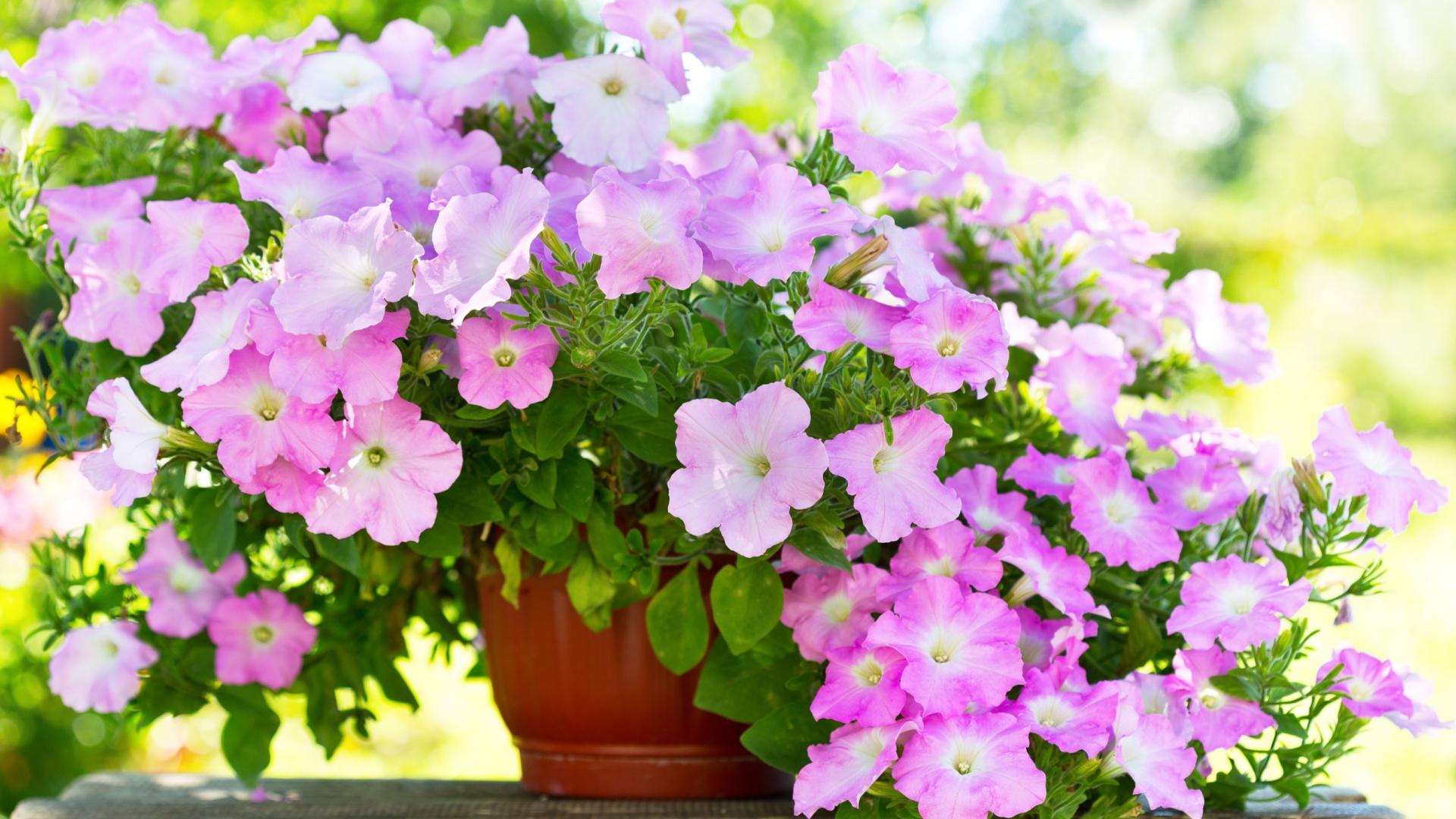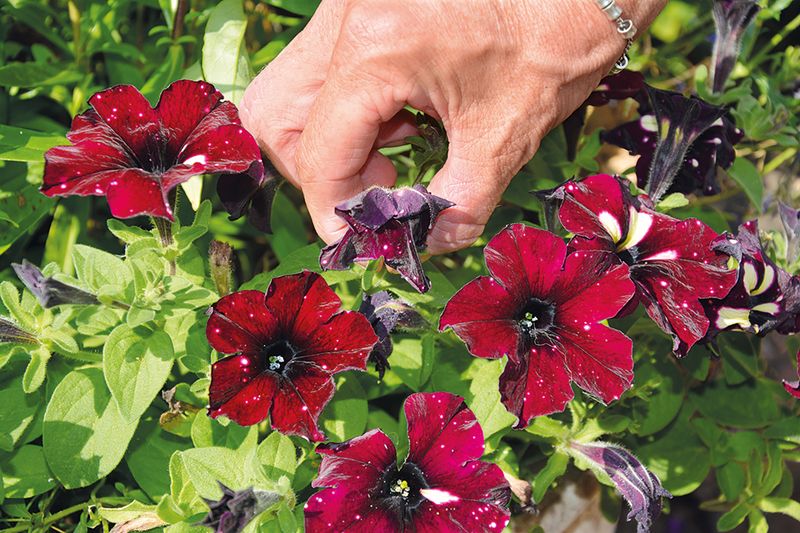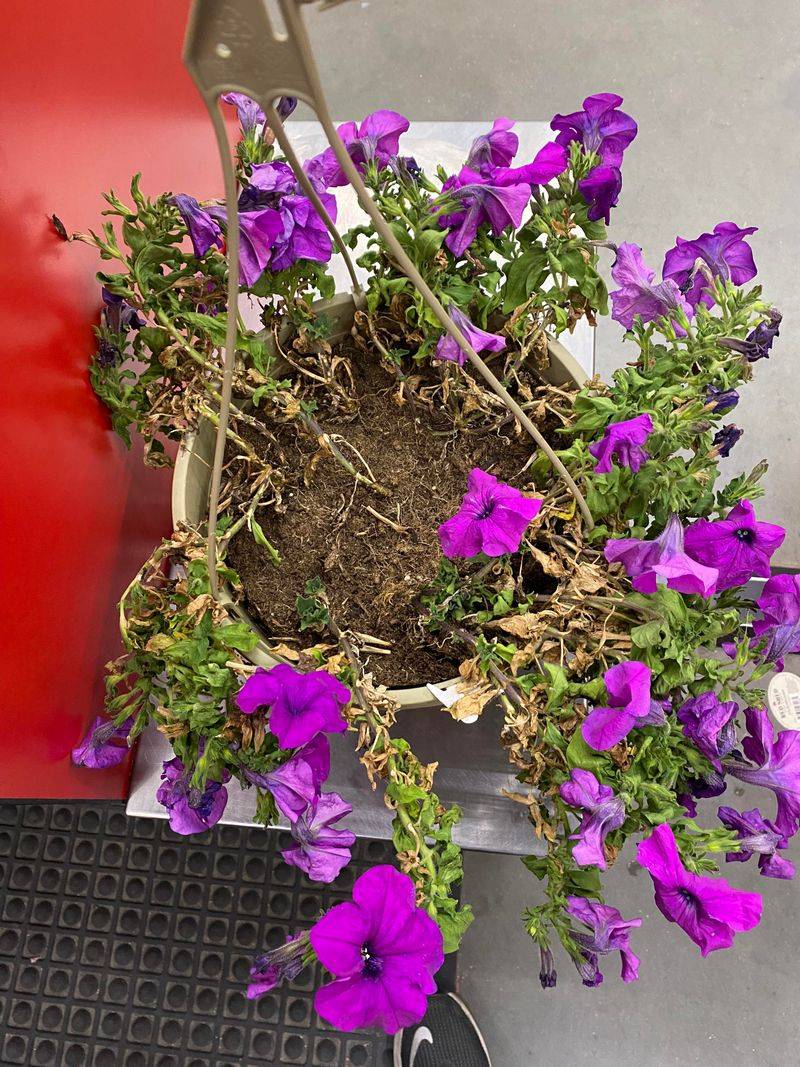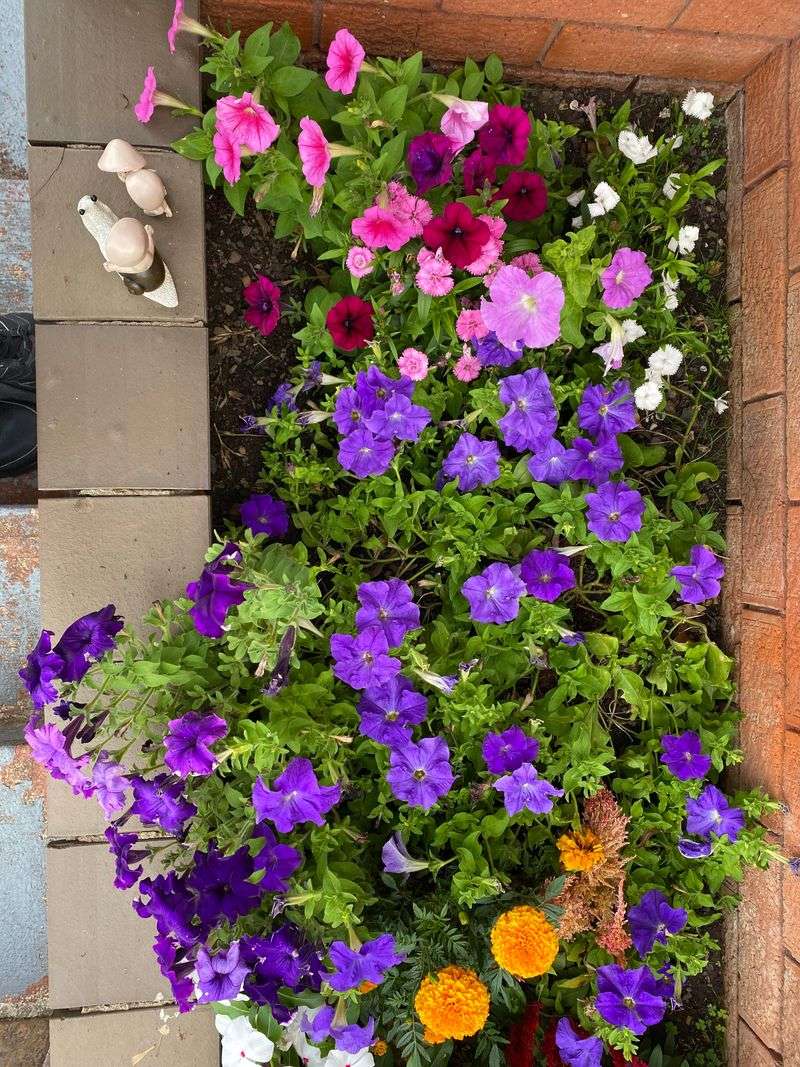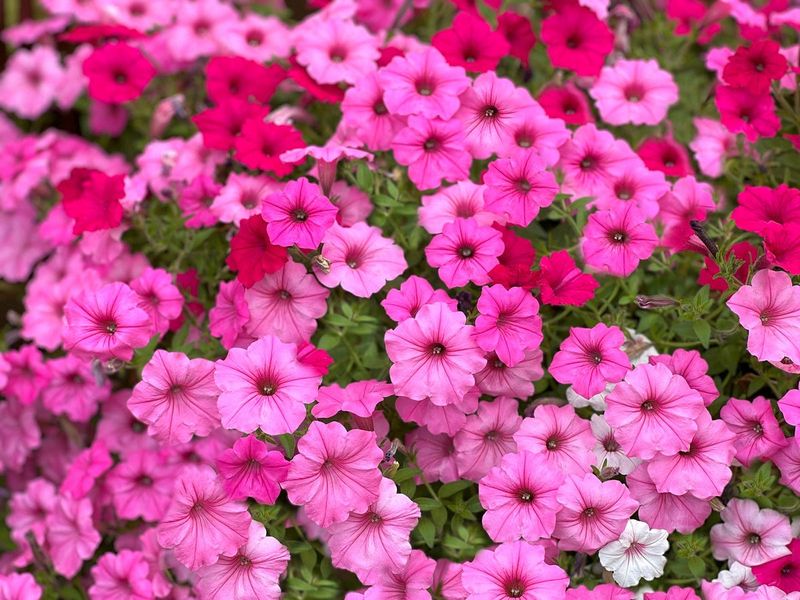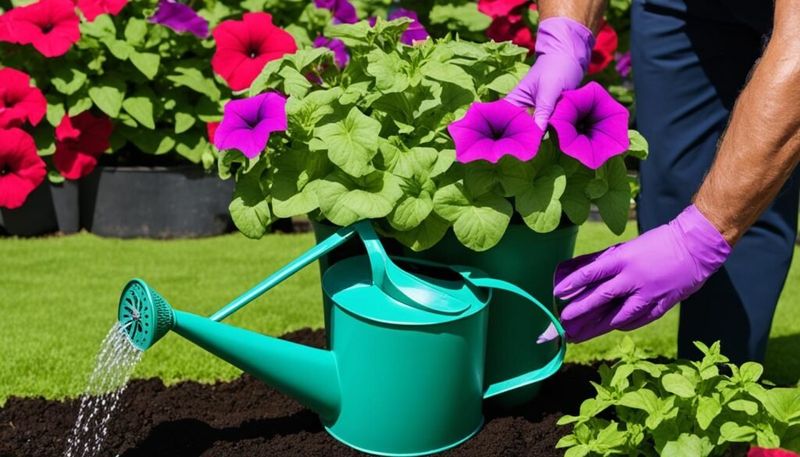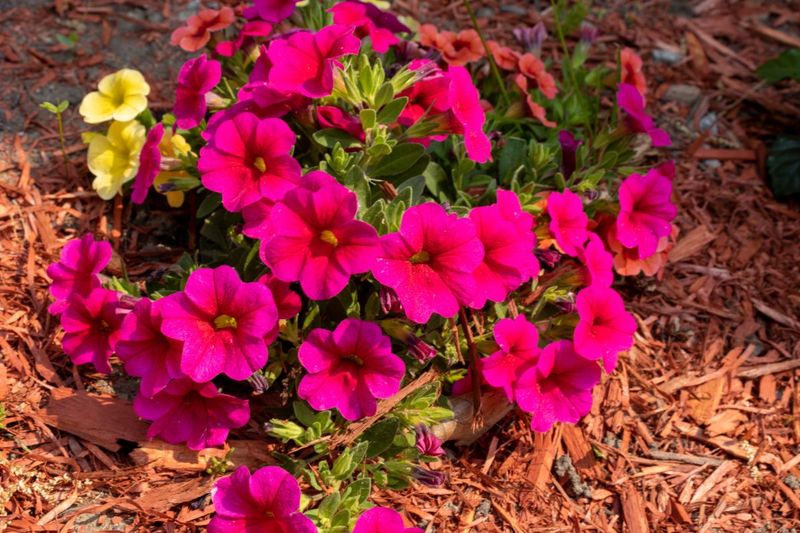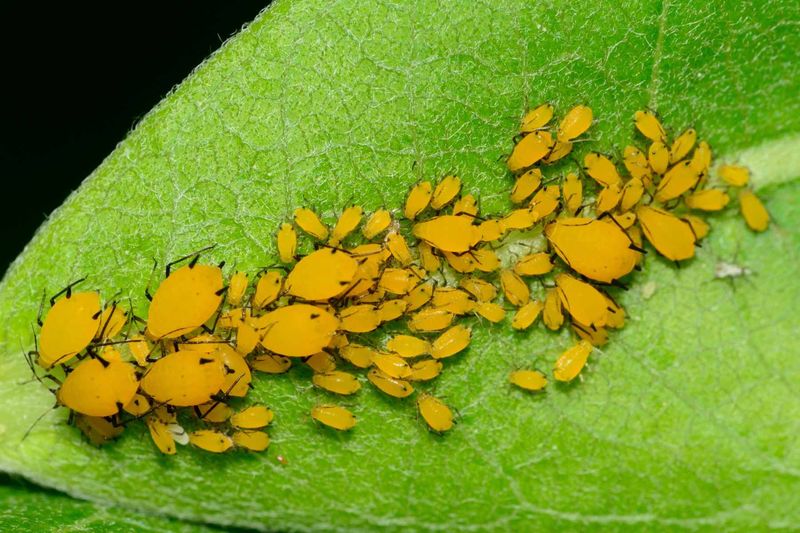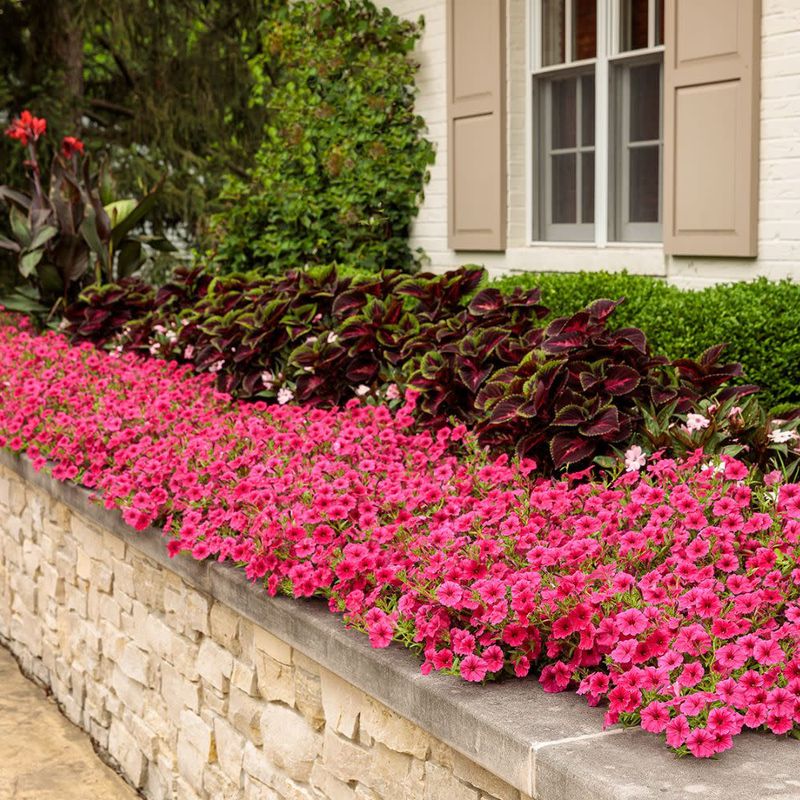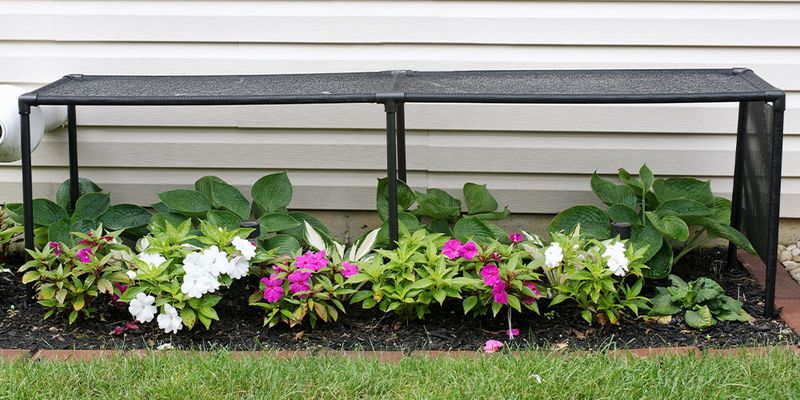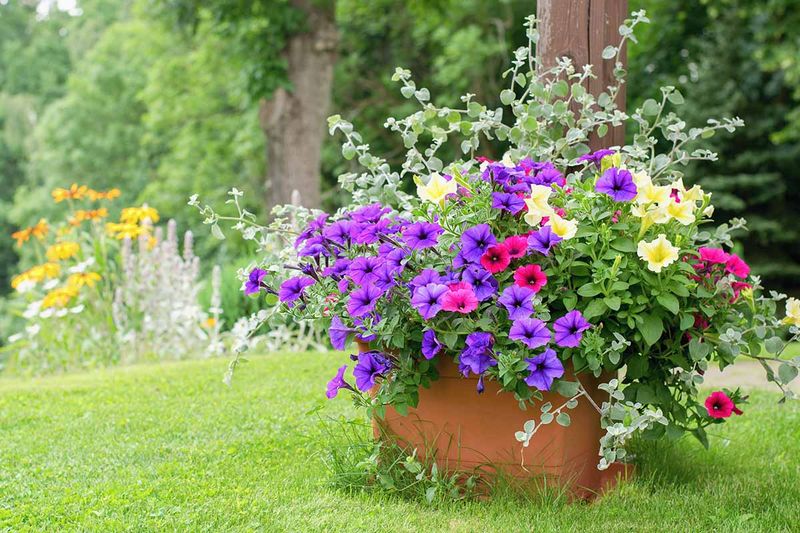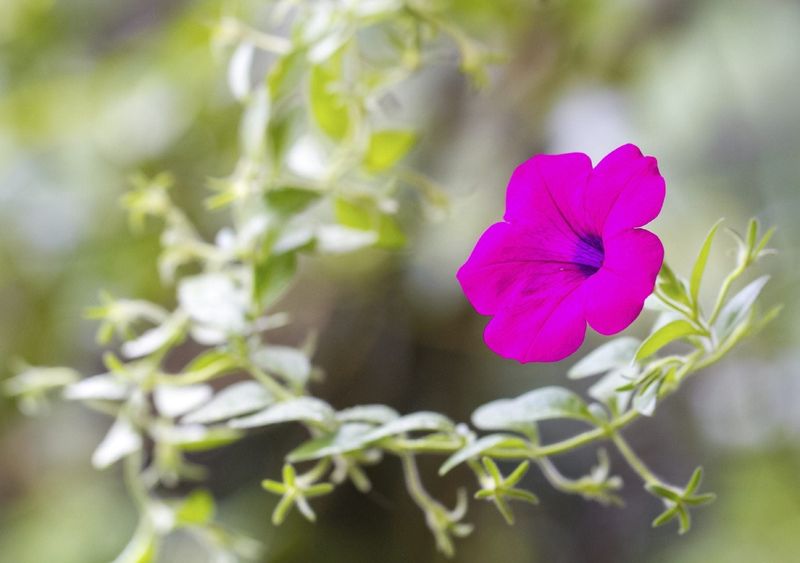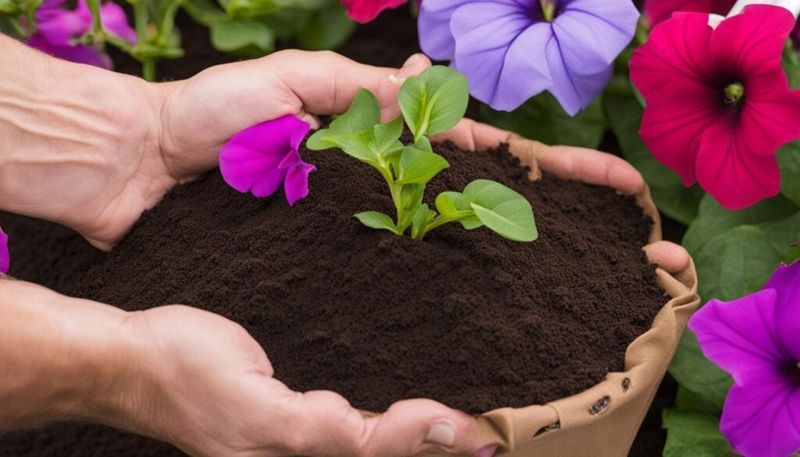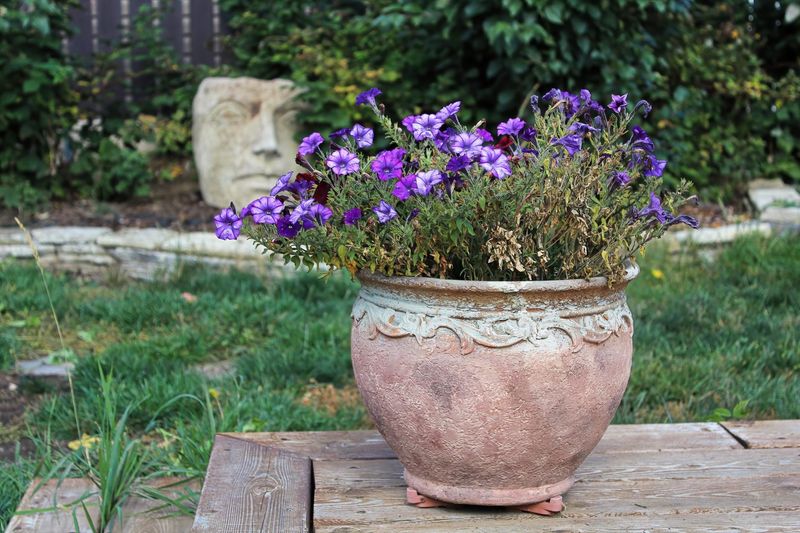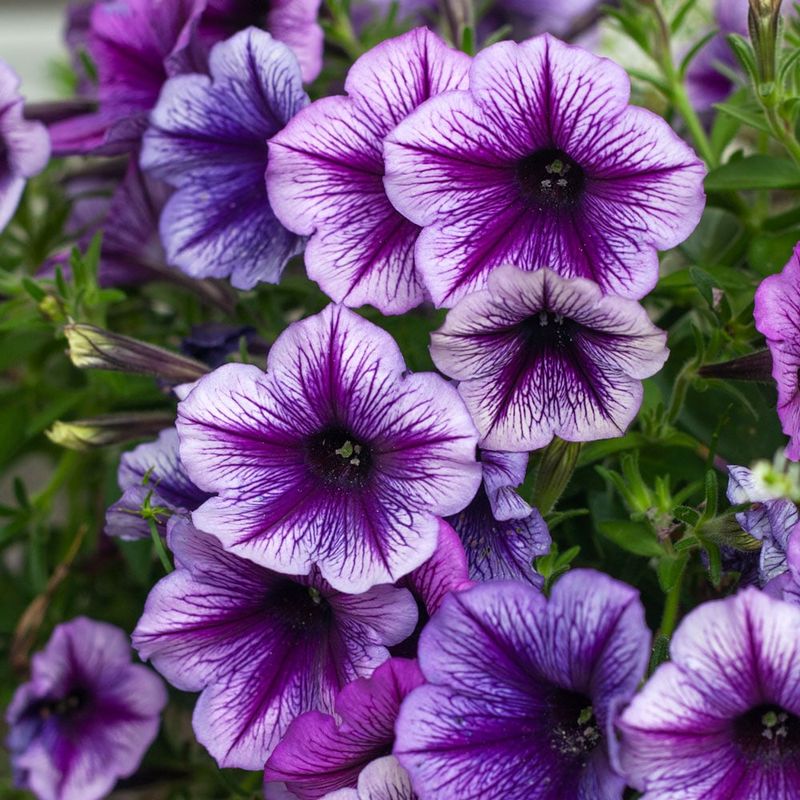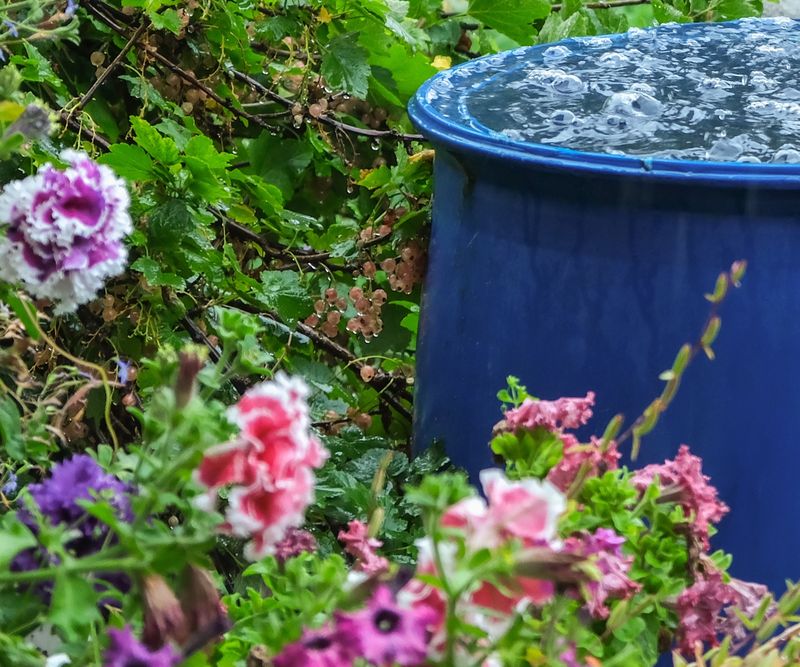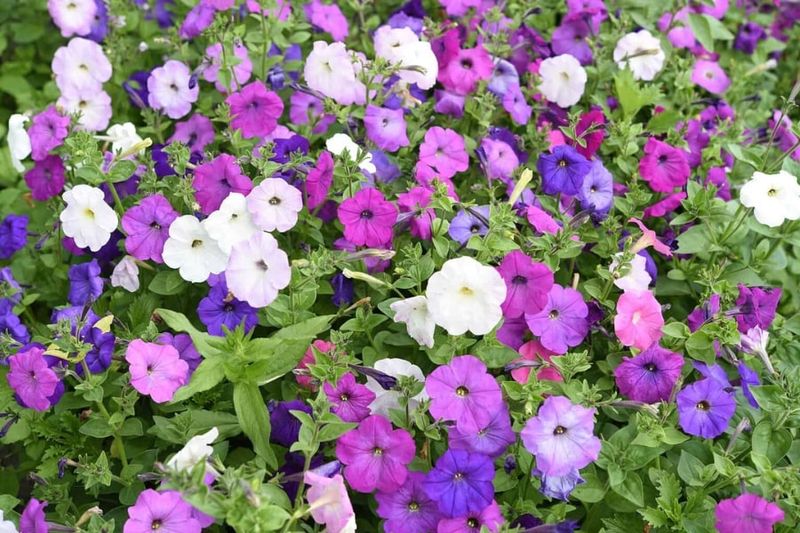Petunias fading fast? Don’t give up on those blooms just yet. With the right tricks, your garden can bounce back and burst with color before summer slips away.
These 16 smart, easy hacks will help revive tired plants, boost new growth, and keep those vibrant flowers coming—so your petunias finish the season strong.
1. Deadhead Regularly
Snipping off spent blooms prevents petunias from setting seeds, redirecting energy into making new flowers instead. Grab those spent flowers every few days, pinching them off where they meet the stem.
Garden scissors work well for this task, but your fingers do the job just fine too. Make deadheading part of your morning garden routine while enjoying your coffee.
Regular deadheading can double or even triple the number of flowers your petunias produce throughout the season!
2. Cut Back Leggy Growth
By midsummer, petunia stems often stretch out, becoming long and scraggly with fewer flowers. Don’t be afraid to give them a serious haircut!
Trim back about one-third to half of the plant’s length when stems get leggy. This might seem harsh, but petunias respond with vigorous new growth and a fresh flush of blooms within a couple weeks.
Focus your cuts just above leaf nodes to encourage bushier growth patterns rather than more legginess.
3. Feed With Bloom-Boosting Fertilizer
Hungry petunias need regular feeding to produce abundant flowers. Look for fertilizers with a higher middle number in the NPK ratio (like 10-30-20) which promotes flowering rather than just leafy growth.
Apply liquid fertilizer every 7-10 days for container plants, or every two weeks for garden beds. Morning applications work best, giving plants time to absorb nutrients before evening.
Avoid over-fertilizing though – too much nitrogen causes lush green growth at the expense of those gorgeous blooms!
4. Provide Full Sun Exposure
Petunias absolutely crave sunshine! Position your plants where they’ll receive at least 6-8 hours of direct sunlight daily. Morning sun with light afternoon shade works perfectly in extremely hot climates.
Rotate container plants regularly to ensure even light exposure on all sides. Plants that lean toward light sources develop uneven growth and fewer blooms on shaded sides.
Even shade-tolerant petunia varieties bloom more profusely with proper sunlight, so don’t skimp on this essential element!
5. Water Deeply But Infrequently
Contrary to common practice, petunias prefer thorough, deep watering rather than frequent light sprinkles. Water until it flows freely from drainage holes in containers or soaks 6-8 inches into garden soil.
Allow the top inch of soil to dry out between waterings. This encourages deeper root growth and makes plants more resilient during hot spells.
Early morning watering gives foliage time to dry before evening, reducing disease problems that can hinder blooming potential.
6. Mulch To Retain Moisture
A 2-inch layer of lightweight mulch helps petunias thrive through summer heat by keeping roots cool and moist. Pine straw or fine bark chips work beautifully without compacting the soil.
Keep mulch slightly away from plant stems to prevent rot issues. This simple step reduces watering frequency by up to 30% during hot weather.
Mulched petunias maintain more consistent soil temperature and moisture levels, reducing stress that can interrupt flowering cycles.
7. Prevent Pest Problems Early
Aphids and thrips love munching on petunia buds, preventing them from opening properly. Spray plants with a strong stream of water in the morning to dislodge these tiny pests before infestations take hold.
For persistent problems, try insecticidal soap or neem oil sprays, applying in early morning or evening when beneficial insects are less active. Focus spray under leaves where pests hide.
Healthy, pest-free petunias direct energy to flower production rather than fighting damage from unwanted visitors.
8. Plant Heat-Tolerant Varieties
Not all petunias handle summer heat equally! Vista, Supertunia, and Wave series varieties show remarkable heat tolerance and reblooming ability compared to traditional types.
These specially bred petunias keep flowering when temperatures soar into the 90s. Their genetics include traits from wild petunias native to hot South American regions.
Look for varieties specifically labeled “heat-tolerant” or “summer endurance” when shopping for late-season plantings or replacements for struggling plants.
9. Provide Afternoon Shade In Extreme Heat
When temperatures consistently exceed 90°F, even sun-loving petunias benefit from afternoon shade breaks. Use shade cloth, umbrellas, or position containers where they receive morning sun but afternoon protection.
Moving potted petunias to shadier spots during heatwaves prevents flower drop and encourages continued blooming. Return them to sunnier positions when extreme heat passes.
This temporary shade strategy helps plants conserve energy for flower production rather than struggling against heat stress.
10. Use Self-Watering Containers
Self-watering pots provide consistent moisture that keeps petunias blooming through hot spells. The water reservoir below creates humidity around roots and eliminates drought stress between waterings.
Fill reservoirs every few days rather than daily surface watering. This steady moisture supply prevents the bloom-stopping stress of alternating between soggy and bone-dry conditions.
Modern self-watering containers come in decorative styles that enhance your garden’s appearance while promoting healthy, continuous flowering.
11. Pinch Back New Transplants
Young petunia plants benefit tremendously from early pinching. When plants are 4-6 inches tall, pinch off the growing tips to encourage branching instead of upward growth.
This simple technique creates bushier plants that produce far more flowers throughout the season. Use your thumbnail and forefinger to remove just the top 1/4 inch of each stem.
Plants pinched early develop multiple flowering stems instead of fewer, longer ones, resulting in spectacular bloom displays that continue until frost.
12. Improve Soil Drainage
Petunias absolutely hate wet feet! Mix perlite, coarse sand, or fine gravel into heavy garden soil to improve drainage. For containers, ensure potting mix contains 25-30% drainage material.
Elevated beds work wonders for petunias in areas with clay soil. The improved drainage prevents root rot issues that stop flowering and eventually kill plants.
Healthy roots in well-drained soil actively take up nutrients needed for continuous flower production throughout the summer months.
13. Refresh Container Soil Midseason
By midsummer, container petunias often exhaust their soil. Gently remove the top 1-2 inches of old potting mix without disturbing roots, then replace with fresh, nutrient-rich potting soil.
This soil refreshment provides new nutrients and improves water penetration to tired root systems. Think of it as a mid-season boost that reinvigorates flowering potential.
Add slow-release fertilizer pellets to this new top layer for continuous feeding that supports abundant late-season blooms.
14. Try Compost Tea Applications
Homemade compost tea works magic on tired petunias! Steep finished compost in water overnight, strain the liquid, and use this nutrient-rich brew to water plants every two weeks.
The beneficial microorganisms in compost tea improve soil health while providing gentle, balanced nutrition. Plants respond with renewed vigor and flowering.
Unlike chemical fertilizers, compost tea won’t burn roots even during hot weather, making it perfect for reviving summer-stressed petunias.
15. Protect From Heavy Rain
Surprisingly, summer downpours can devastate petunia blooms. Heavy rain damages delicate flowers and splashes soil onto petals, encouraging fungal problems that halt blooming.
Move container plants under eaves during predicted storms. For garden beds, temporary clear plastic shelters propped above plants (not touching foliage) provide excellent protection.
After rainstorms, gently shake excess water from plants to prevent fungal issues and remove damaged blooms promptly to encourage new flower development.
16. Space Plants Properly
Overcrowded petunias compete for nutrients and develop poor air circulation, leading to disease problems and reduced flowering. Allow 12-18 inches between plants in beds and containers.
Don’t be fooled by small transplants – they grow quickly! Proper spacing might look sparse initially but results in healthier plants with more blooms by midsummer.
If containers seem overcrowded by July, consider carefully dividing or transplanting some plants to give remaining ones room to thrive through season’s end.

